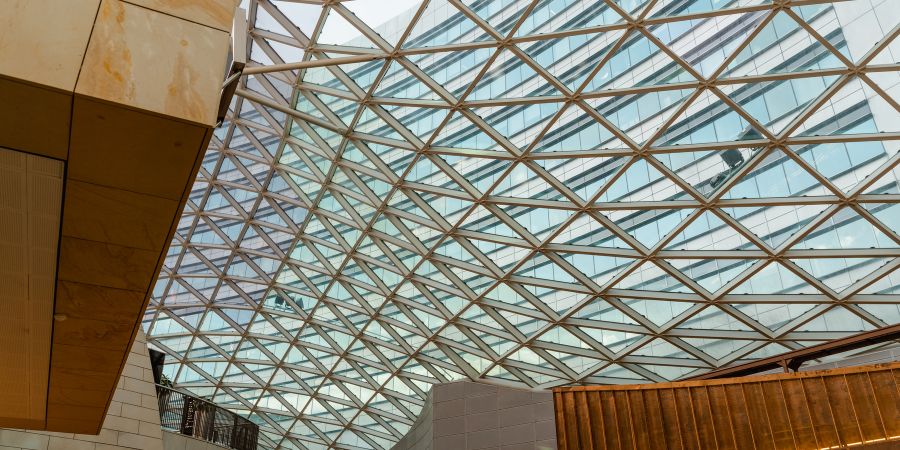Glass roofs have always stood for openness. They bring light where it usually does not reach and make a space feel larger, calmer, more connected to the sky. For centuries, they were reserved for train stations, botanical gardens, and museums. But things have changed.
Across cities and suburbs, glass roofs are showing up in homes, offices, malls, and even hospitals. According to the International Glass Federation, glass roofing demand in construction has grown by 27% globally in the last five years. The reason is simple: people want more daylight, more connection to nature, and spaces that feel less like boxes and more like breathing structures.
But glass, while beautiful, is a demanding material. It can trap heat, cause glare, leak during storms, and lose efficiency over time. This is where AI and digital tools step in. They are not making glass roofs look different. They are making them work better, quieter, smarter, and longer.
Let us explore how.
Design Begins with Data, Not Just Sketches
Earlier, designing a glass roof meant relying on experience, intuition, and trial. Today, architects use AI-backed tools that run thousands of simulations before choosing a final shape.
Take a large corporate campus in Singapore. Designers fed in wind patterns, sun angles, rainfall data, and user movement throughout the day. The AI suggested a curved roof with glass panels that blocks direct sunlight during peak hours and reflects heat using micro-coatings on the inner surface. Cooling costs went down by 18 percent in the first year alone.
The software did not just pick a beautiful shape. It picked a smart one.
This shift, from drawing to data-led modeling, is what makes today’s glass roofs fundamentally different from those built even a decade ago.
Digital Twins Know What the Real Roof Feels
Imagine you have a glass roof above a busy airport lounge. The weather changes. The pressure rises. A seal starts to wear out. Normally, you would not know until something goes wrong.
But with a digital twin, a live, virtual version of the actual roof, everything can be tracked in real time. Sensors inside the glass roofing systems send temperature, stress, and moisture data to a dashboard. If one panel overheats or vibrates too much in high wind, the system knows. And so do the engineers.
At a public library in Copenhagen, this system helped prevent a full replacement of the roof. It spotted tiny cracks forming in a corner panel and alerted the team. The panel was replaced before it failed.
The cost? Minor. The savings? Massive.
3D Modeling Shows What the Eye Cannot See
Before the first beam is placed, the glass roofing already exists, digitally. Engineers can now build a virtual version of every screw, joint, and pane of glass. They test wind flow, snow load, even how shadows move through the day.
This is not just for safety. A shopping centre in Toronto used digital modeling to study how the winter sun would bounce off their atrium and hit shop windows. Based on the results, they changed the angle of the glass roof by 2 degrees. Glare was reduced, and heat spots vanished.
No guesswork. Just smart visualisation.
Are glass roofs energy efficient?
Glass roofs used to act like greenhouses. Beautiful during the day, but hard to cool. AI tools now help fix that.
Some projects use electrochromic glass, it changes tint depending on sunlight. Others install shading systems that move based on real-time weather data. A retail complex in California saved almost 30 percent on air-conditioning after switching to AI-controlled shading.
But the real shift is invisible. Software runs simulations across seasons and makes small design choices that bring big results. Thicker glass in one corner. A small opening on the east side. A change in frame material. These decisions, backed by data, reduce heat gain and energy waste.
Parametric Design Makes Complex Look Effortless
Beauty still matters. In fact, it matters more now, because function and form no longer need to compete.
Parametric design allows architects to enter values, height, curve, pressure range, and get thousands of design options generated in minutes. The software does the math, but the human chooses what feels right.
The Louvre Abu Dhabi has a dome-like structure that filters light like palm trees. That design came from parametric modeling. So did the rippling canopy at a new airport terminal in Istanbul, where sunlight dances across the floor without heating the space.
What you see is elegance. What you do not see is calculation.
Sensors Make the Roof Smarter Every Day
Once a glass roof is built, the job is not over. Small sensors tucked between panels collect data round the clock.
Humidity. Movement. Heat. Pressure.
This information helps building managers act quickly. If one part of the glass roofing heats up too fast, they check for coating failure. If water collects on one side, drainage is improved. If one area flexes too much in wind, support is added.
In a greenhouse in the Netherlands, roof with glass panels talk directly to climate control systems. If the glass roof gets too warm, vents open automatically. Plants grow faster, waste less water, and stay healthier without any manual effort.
The roof listens. The roof responds.
How to clean and maintain a glass roof?
Fixing a glass roof is expensive and dangerous. So, what if you could fix only what is needed, exactly when it is needed?
That is what predictive maintenance offers.
AI watches sensor data and learns what normal looks like. The moment something shifts, even a slight vibration, it sends a signal. You can repair a minor fault before it grows into a major cost.
A hotel in Dubai replaced this old inspection-based model with predictive maintenance. Over two years, they reduced glass roofing issues by 40 percent. No scaffolding. No water leakage. No downtime during peak tourist season.
Simple changes. Clear results.
Sustainability Now Starts from the Roof
Green buildings are no longer niche. They are expected.
Glass roofs, when designed poorly, can drag a building’s sustainability rating down. But when done right, they become the highlight of an eco-friendly design.
Recycled glass, light-sensitive coatings, smart ventilation, these elements add points for green certifications like LEED. A hospital in Sweden redesigned its glass roof for house entry with AI to reduce glare and capture daylight more efficiently. They earned the highest environmental score in their region.
Today, glass roofs do not just let the light in. They prove that a building cares, about energy, climate, and the people inside.
What is the cost of installing a glass roof?
It depends on several factors: size, type of glass, structural requirements, framing, and location. On average, glass roof for house installation can range from ₹2,500 to ₹6,000 per square foot in India. High-end modern glass roof designs or large glass roofing systems for commercial spaces cost significantly more.
Is a glass roof safe during storms or hail?
Yes, if it’s built using tempered or laminated safety glass and reinforced glass roofing systems. These are designed to withstand heavy wind, impact, and even hail. Regular inspections and smart sensors also play a key role in keeping the glass roof safe year-round.
Can I install a glass roof on an existing house?
In most cases, yes. Retrofitting a roof with glass panels is possible with proper structural assessment. Engineers need to ensure the existing framework can support the added weight of the glass roofing and comply with safety codes.
Glass roof vs traditional roof
Glass roofs offer natural light, visual openness, and aesthetic appeal. Traditional roofs offer better insulation and are usually cheaper. The choice depends on your priorities — form, function, or both.
Looking Ahead: What Smart Roofing Really Means
The future is not filled with flying cars or self-cleaning buildings. It looks a lot like this: better decisions made earlier, backed by data, refined by AI, and supported by digital tools that keep learning over time.
Glass roofs will continue to evolve. They will adapt to seasons, sense storms, track air quality, and interact with building systems in real time. They will be part of a building’s brain, not just its body.
Designers, engineers, and facility managers will speak a shared language: performance. They will rely less on intuition and more on insight. The most beautiful glass roofs of tomorrow will not only look light. They will think light.
Final Takeaway
Glass roofs are changing. They still inspire. But now they also inform. They still brighten spaces. But now they also respond to them. With AI and digital tools guiding every step, from concept to care, glass roofing is becoming one of the most intelligent parts of modern architecture.
They are no longer just windows to the sky. They are transparent roof panels that understand it.



